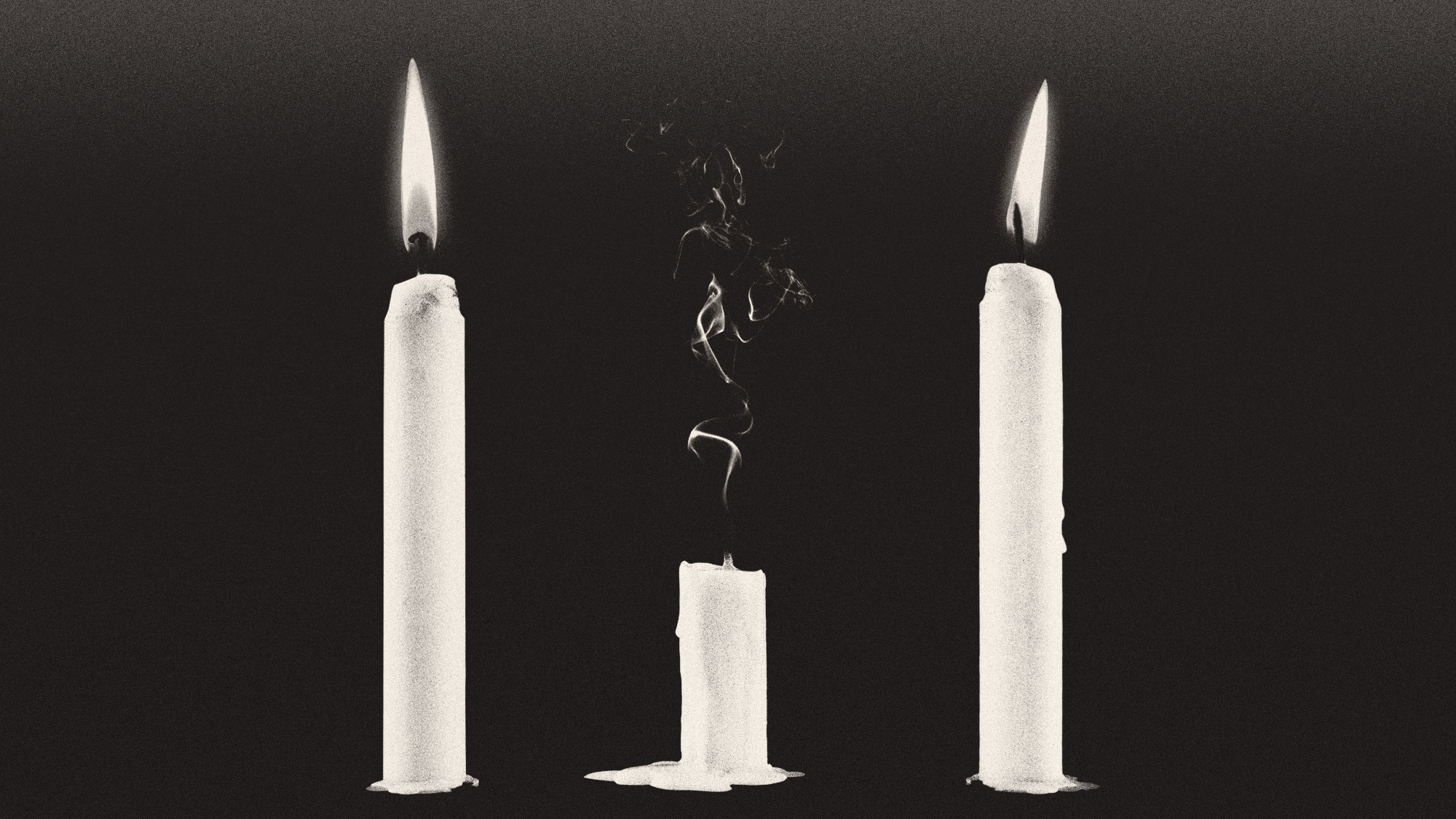Gold price waits for rates clues from Jackson Hole
Political turmoil in the US has the potential to 'help gold in the short and longer term'
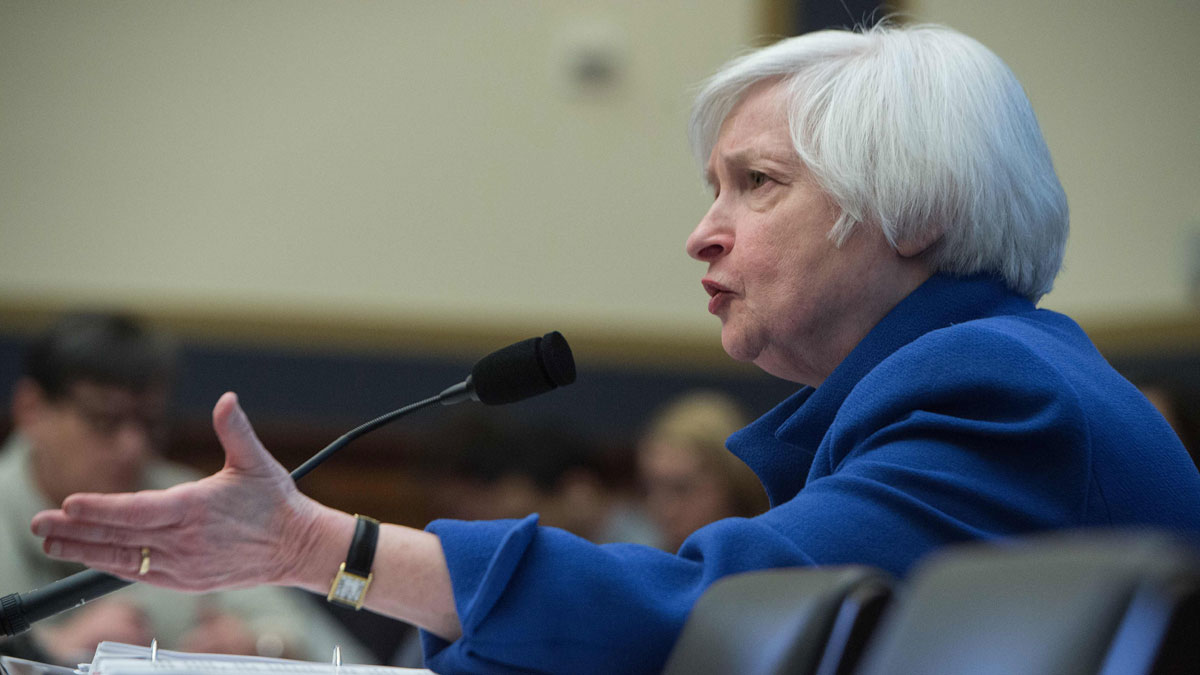
Gold price rebounds ahead of Trump inauguration
20 January
The gold price rebounded back above $1,200 an ounce last night, ahead of Donald Trump becoming US president today.
Spot gold had fallen by 0.7 per cent and was as low as $1,198 an ounce, well down from the $1,218 at which it peaked on Tuesday.
The Week
Escape your echo chamber. Get the facts behind the news, plus analysis from multiple perspectives.

Sign up for The Week's Free Newsletters
From our morning news briefing to a weekly Good News Newsletter, get the best of The Week delivered directly to your inbox.
From our morning news briefing to a weekly Good News Newsletter, get the best of The Week delivered directly to your inbox.
But after a strong end to New York trading, it bounced back to $1,206 an ounce overnight in Asia and was changing hands for around $1,200 in London this morning.
The "Trump effect" has seen turbulent times for the metal. After highs well above $1,300 an ounce, gold slumped following the presidential election in November, hitting close to $1,100 as traders bet on a huge rise in inflation triggered by a wave of infrastructure spending.
Inflation tends to be contained through increases in interest rates, which are also more likely to rise quickly if the economy benefits from Trump's promised package of spending and tax cuts. There is already the suggestion that the Federal Reserve will raise rates several times this year.
Rising interest rates are generally bad for gold, which does not offer any income and loses out to yield-bearing assets.
A free daily email with the biggest news stories of the day – and the best features from TheWeek.com
However, belief in the "Trumpflation" narrative has been fading, says the Financial Times. Traders are not confident "the new administration can deliver its goals" and are also worried about Trump's volatile temperament.
Reuters said a renewed bout of uncertainty over the property mogul's presidential capabilities has triggered "safe haven" buying, boosting gold.
HSBC analyst James Steel said in a note: "The incoming U.S. administration is still a relatively unknown factor, certainly in comparison to other incoming administrations in recent decades."
Gold prices are also being helped by a dip for the dollar, against which the metal is often held as a hedge, based around conflicting messages over the strength of the currency and future policies.
Earlier this week, Trump warned the dollar was "too high" and was hurting US companies' competitiveness globally, but yesterday, his Treasury Secretary Steven Mnuchin reiterated support for a "strong currency" .
Gold is likely to be volatile in New York later this afternoon following Trump's inaugural address, which will be scoured for signals on his policy priorities.
Gold price falls as Yellen sounds hawkish tone
19 January
The gold price faltered again last night, falling back to the $1,200-an-ounce level following a warning on interest rates from Federal Reserve chairwoman Janet Yellen.
Speaking two days before Donald Trump's inauguration ceremony, Yellen said the US risked a "nasty surprise" if it waited too long to raise rates, says the Financial Times, adding that the Fed intends to increase rates three times this year and "a few times a year until 2019".
Increasing interest rates are bad news for gold because it does not offer an income and is therefore comparatively less attractive than assets that generate yield.
After hitting an eight-week high of $1,218 an ounce on Tuesday, suggesting the gold price might break its shackles to swing substantially higher, trading fell back to $1,201 an ounce.
It was little changed this morning, at $1,204 an ounce.
But despite the hawkish picture on rates, which experts believe will drag the gold price much lower in time, for now "there should be some consolidation around the $1,200 levels", says Mark To, of Hong Kong's Wing Fung Financial Group.
That's because markets – and the Fed itself – will first wait to get a sense of Trump's policy agenda after he takes over as president tomorrow, says Reuters.
"We can expect random shocks from him," said To.
Last year, the prevailing narrative was that a pledged $1trn (£800bn) of infrastructure spending would boost growth and inflation and so interest rates, which would be bearish for gold.
INTL FCStone analyst Edward Meir said: "We would view any short-term weakness as a buying opportunity in gold given that we do not think the Fed will be pushing the higher rate trajectory story so aggressively over the short-term.
"The Fed would want to first wait and see what kind of fiscal policies Donald Trump formulates and sends to Congress."
Gold price breaks above $1,200 ceiling
18 January
The gold price rose again on Tuesday, busting through a resistance level above $1,200 an ounce that experts said could herald another jump higher.
Spot gold hit an eight-week high of $1,218 an ounce at one point, eventually settling 1.6 per cent higher at $1,215.
On Monday, French investment bank Societe Generale said that "for the current rebound to extend further", trading needed to "clear $1,207" - the level at which recent rallies have stalled, says Bullion Vault.
Investors tend to set buying and selling markers at levels that relate to longer-term price trends and give an indication of when gold is overbought or oversold. When it closes above or below these levels, it suggests new information has markedly changed perception and opens up a move to a new price range.
In this case, traders reacted to Theresa May's speech on Brexit and comments on the dollar by US president-elect Donald Trump, which respectively boosted safe-haven demand and undermined the greenback.
Gold is the de-facto safe haven asset on global markets and does well whenever traders fear significant upheaval. It is also negatively correlated with the dollar, against which it is typically held as a hedge.
May's speech confirmed she intends to take the UK out of the EU single market after Brexit, an outcome which many economists believe will be bad for the UK and EU economies.
Trump, meanwhile, told a newspaper interview that the US dollar was too strong, says Investing.com, leading to the currency falling as traders anticipated a range of protectionist trade policies being introduced when he enters the White House.
But a note from think-tank Capital Economics, reported by Mining.com, warned gold's rally "may be shortlived".
It echoed warnings from experts that interest rates in the US are set to be increased markedly this year, while the dollar stays historically high. Such forecasts explain why prices have run out of steam of late.
Traders could be taking heed: gold was down slightly this morning, to $1,213 an ounce.
Gold price bolstered by hard Brexit fears
16 January
Gold is being boosted this morning as concerns over a hard Brexit dominate the market commentary.
Reports indicate that Theresa May will tomorrow signal the UK is to quit the European single market when it leaves the EU. This has worried the markets, with traders concerned about the destabilising consequences for the UK, EU and, ultimately, the world's economies.
Consequently, a rush of so-called "safe-haven demand" triggered a wave of gold buying, Reuters reports, pushing the gold price up 0.8 per cent to $1,205 an ounce in Asian trading overnight.
DailyFX says prices are also being bolstered by the fact traders are now less convinced Donald Trump's presidency will result in stronger growth and inflation.
"This narrative dominated markets in the final two months of 2016 but seems to have lost its lustre in January as investors turn leery about taking bets on the basis of an economic platform that is almost entirely unknown," it says.
Reuters reports that "inflation, industrial production and housing data [will] dominate a holiday-shortened week in the United States" and are "expected to show the economy ended 2016 with strong momentum".
This will increase confidence that the US Federal Reserve will follow through on its forecast of three interest rate rises this year.
Gold doesn't offer an income yield and so struggle when rates are rising. Many experts believe that unless the economic trend reverses, gold's gains will be capped around or under $1,200 for the foreseeable future.
Prices have already dipped backed slightly in London this morning, falling to below $1,202 an ounce.
Gold price hits ceiling at $1,200 an ounce
13 January
The gold price rally is continuing to run aground near its seven-week high of slightly more than $1,200 an ounce, according to experts.
Trading set a new bar for the year so far this week, reaching its highest level since mid-November of $1,207 an ounce yesterday.
But prices have since fallen back and dropped below the psychologically-important $1,200-an-ounce level to $1,193 overnight. Spot gold was changing hands at $1,197 an ounce this morning in London.
The dip coincided with a rebound for the dollar, which took a sharp hit earlier this week following president-elect Donald Trump's chaotic press conference.
Gold tends to be inversely correlated with the greenback, as it is held as a safe haven hedge against the world's default reserve currency.
However, experts predict trading this year will be most directly determined by the Federal Reserve's interest rate policies. The central bank upgraded its forecasts in December and set out three increases this year.
Rising interest rates usually hurt gold, which does not offer an income and so loses ground to yielding assets.
Fed officials yesterday "cautioned that the fiscal and tax plans sketched out by the incoming Trump administration could spur a short-term economic boost that would result in longer-run inflation", says Reuters.
As interest rates are the main mechanism to control inflation, the comments were "bearish for gold", HSBC analyst James Steel says.
Reuters technical analyst Wang Tao said spot gold generally faced a "strong resistance zone of $1,205-$1,210 per ounce, and may retrace steps back towards support at $1,172".
Saxo Bank, meanwhile, noted in a quarterly report that the current level of resistance is in line with the "downtrend in place since 2011's record high", reports Mining.com.
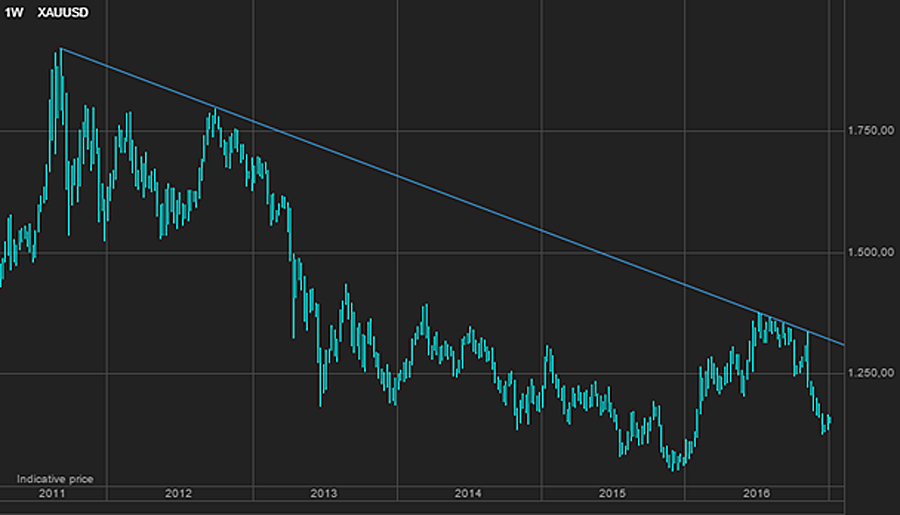
On that basis and assuming the rates picture holds, which is a big assumption given the politically upheaval in the US this year, observers expect gold to fall much further this year, predicting $1,100 or lower.
-
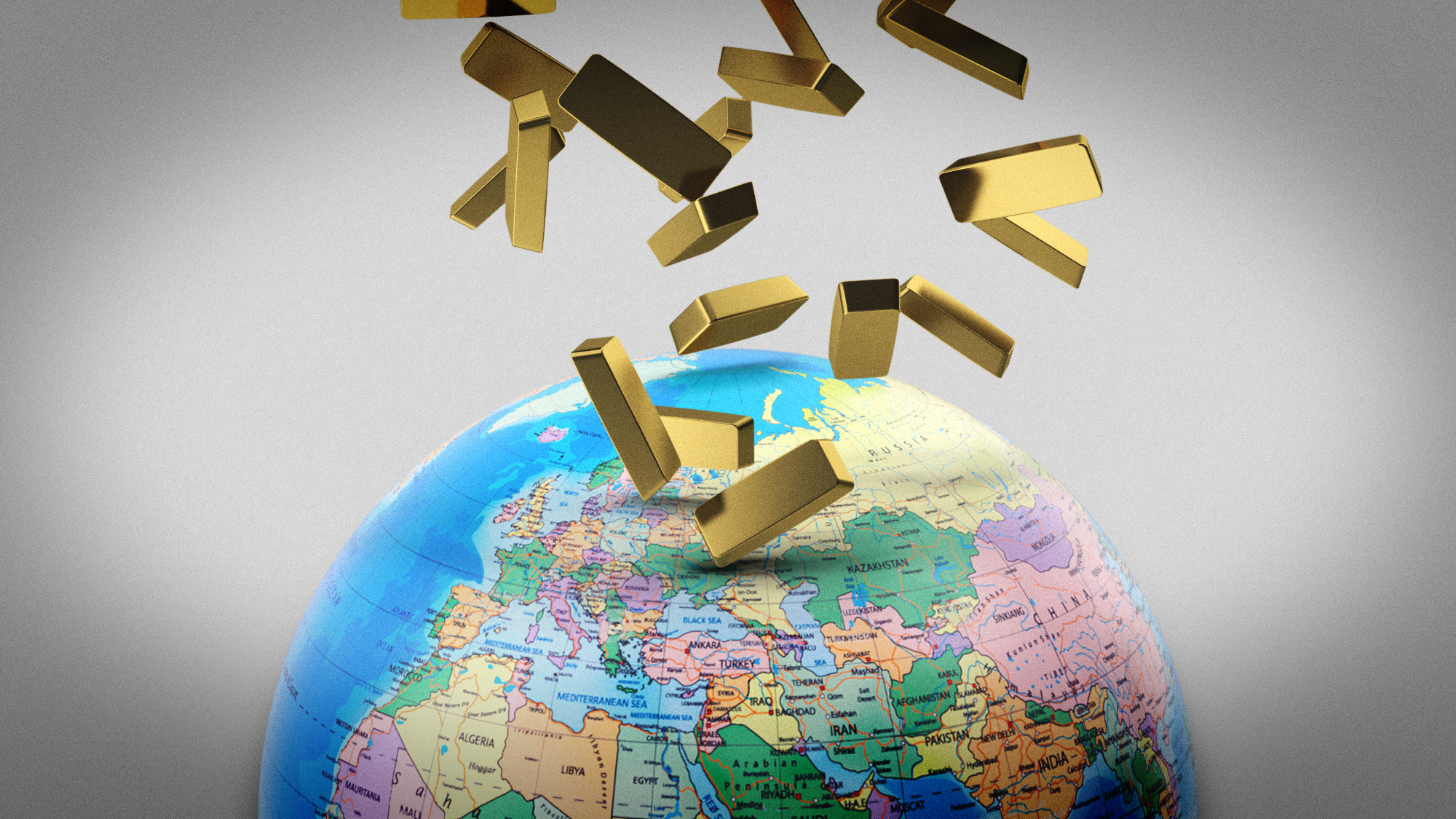 What a rising gold price says about the global economy
What a rising gold price says about the global economyThe Explainer Institutions, central banks and speculators drive record surge amid ‘loss of trust’ in bond markets and US dollar
-
 Gold tops $4K per ounce, signaling financial unease
Gold tops $4K per ounce, signaling financial uneaseSpeed Read Investors are worried about President Donald Trump’s trade war
-
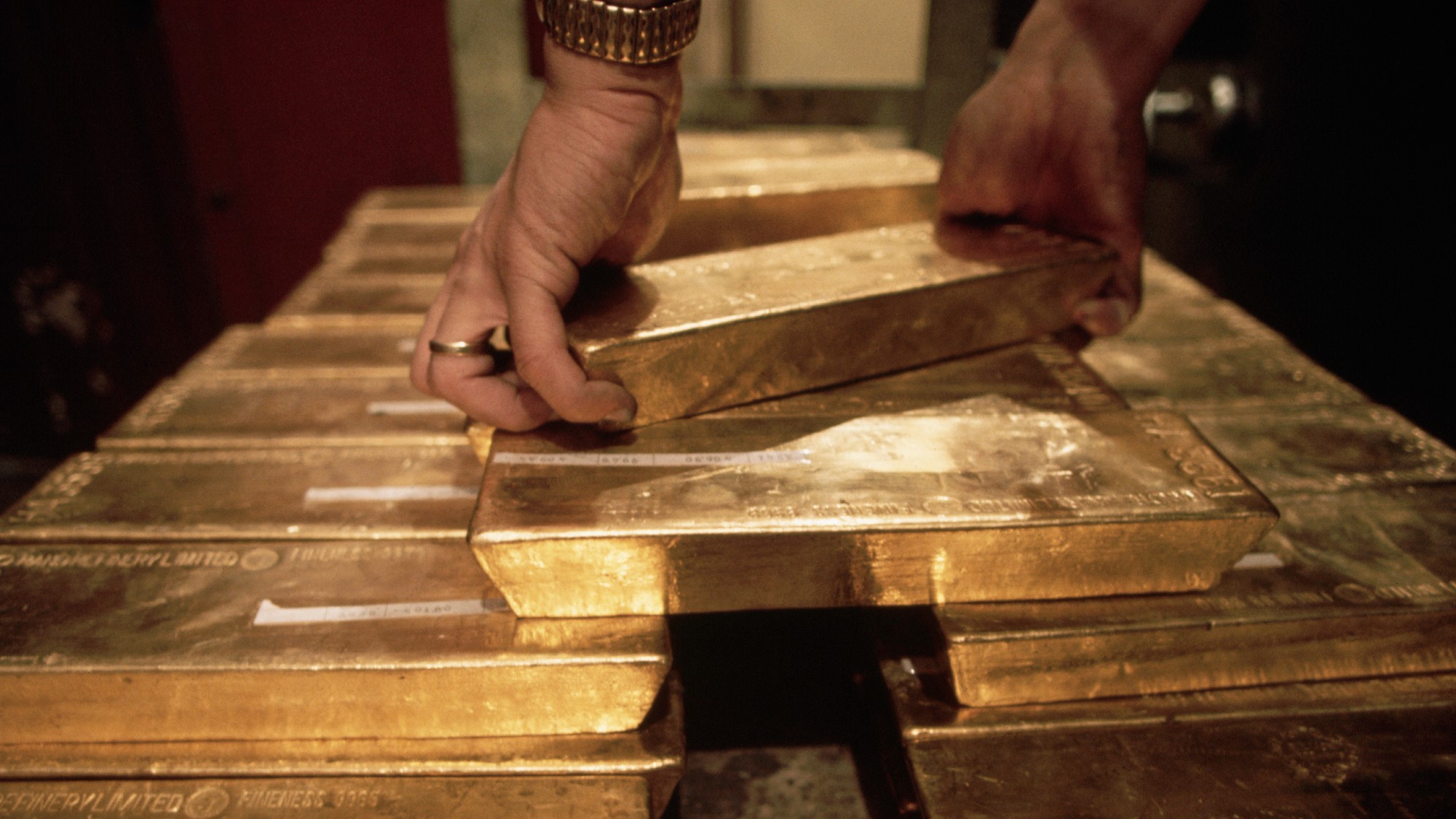 Safe harbor: Gold rises as stocks sink
Safe harbor: Gold rises as stocks sinkfeature It's a golden age for goldbugs
-
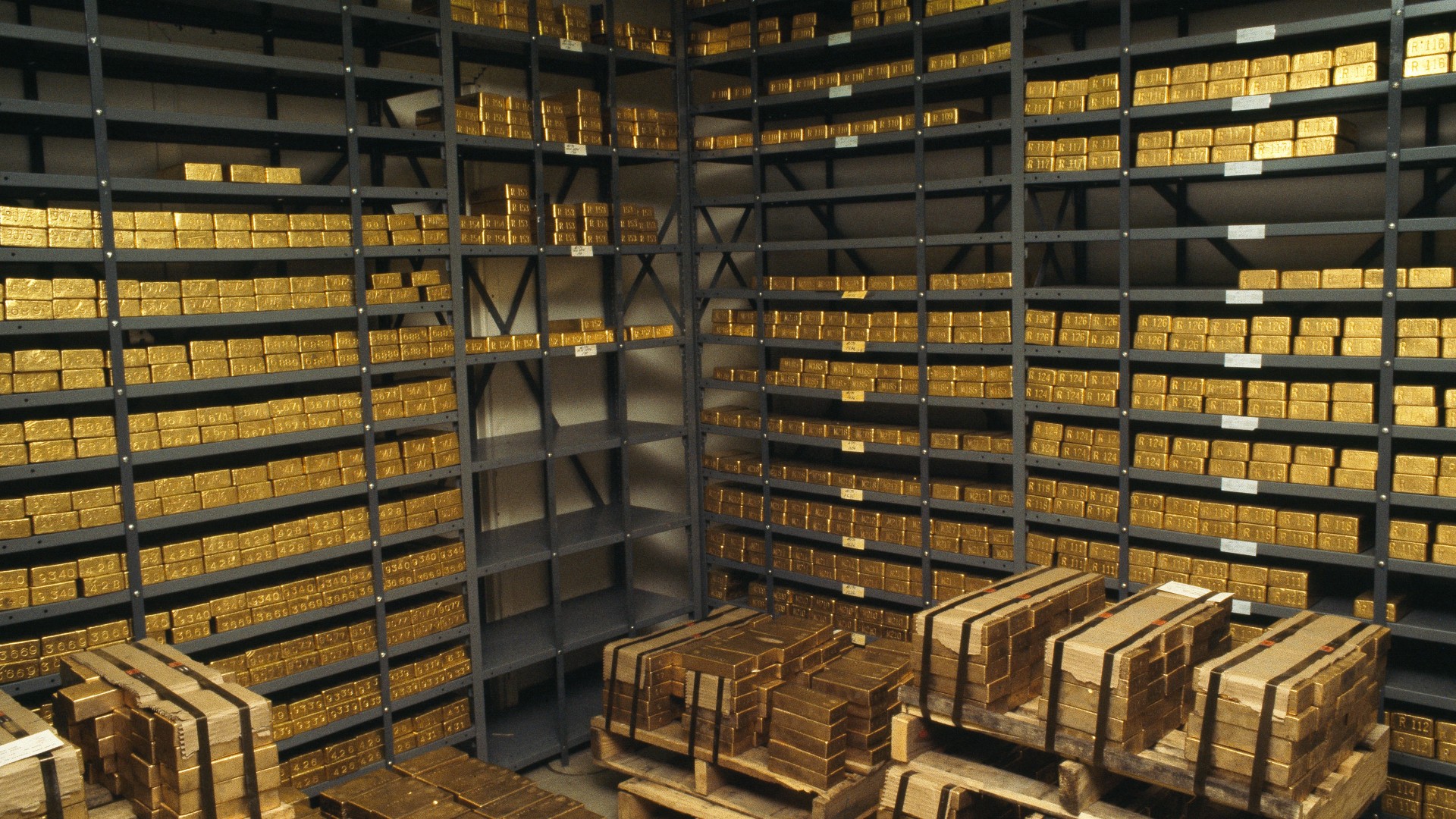 What rising gold prices can tell us about the economy in 2024
What rising gold prices can tell us about the economy in 2024The Explainer Market hits all-time high, boosted by a weakening US dollar and rising global tensions
-
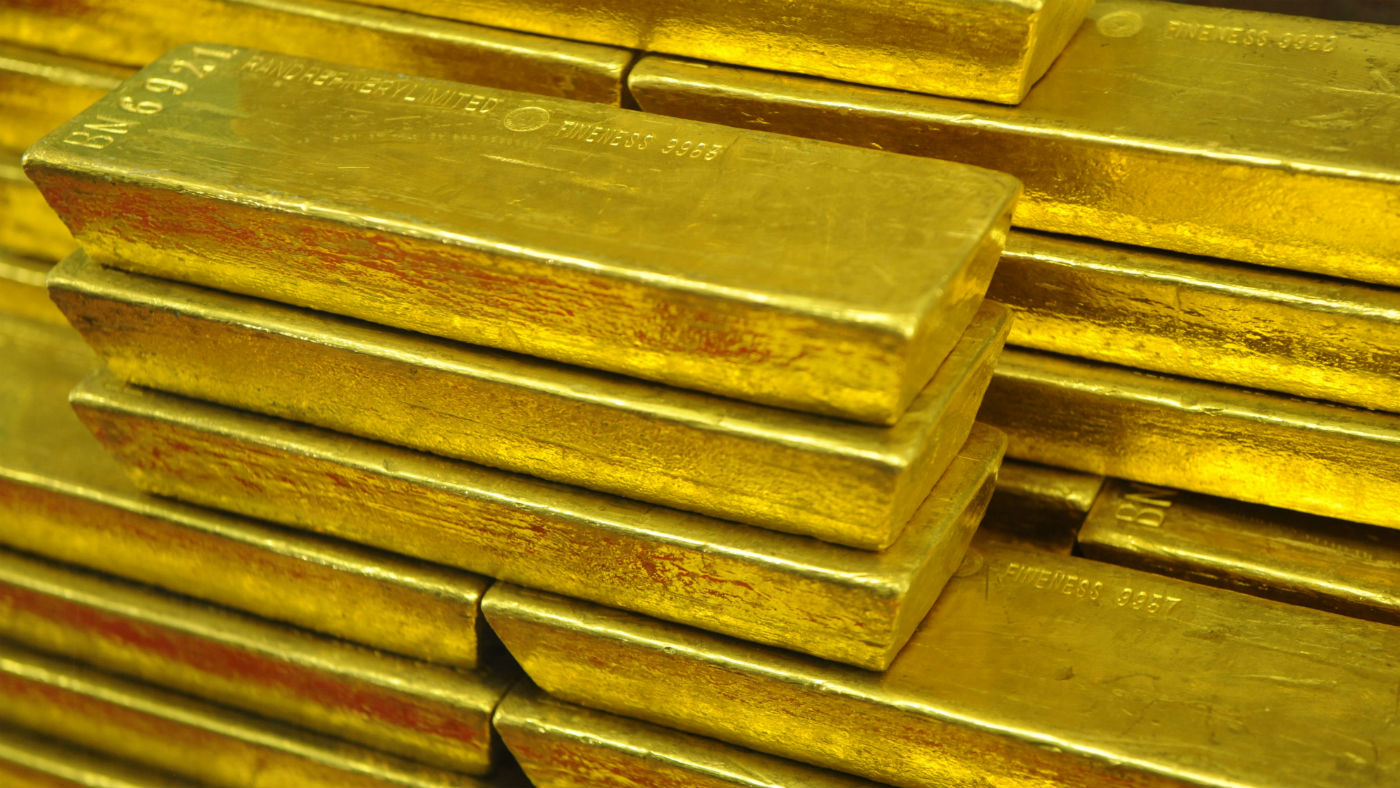 Gold’s ‘flash crash’: what the experts think
Gold’s ‘flash crash’: what the experts thinkfeature Bad news, good news and a loss of faith
-
 What is the price of gold and when is best to buy?
What is the price of gold and when is best to buy?Speed Read Economic and geopolitical uncertainty traditionally drives investors to reliable metal markets
